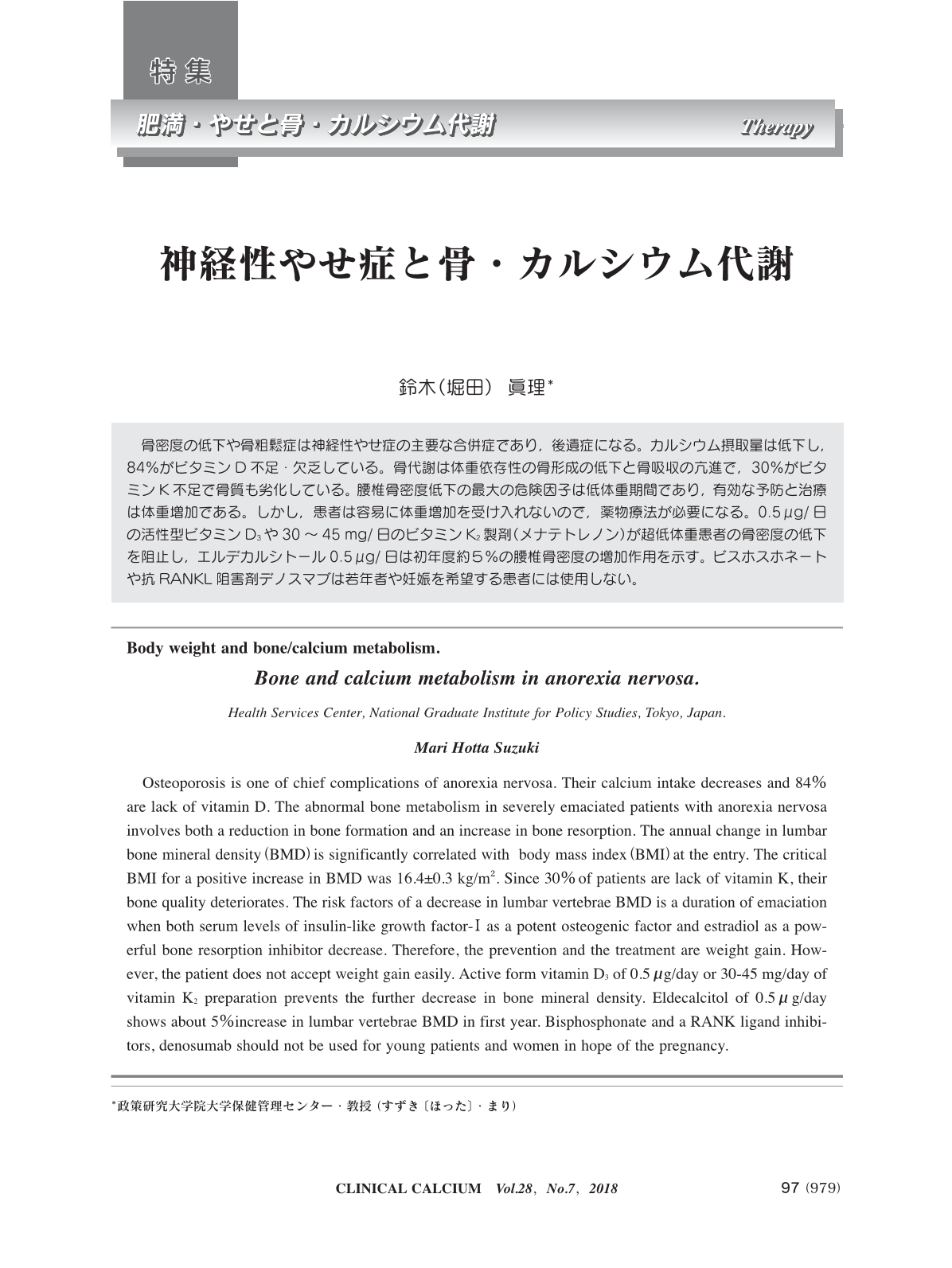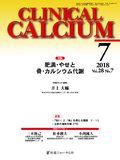Japanese
English
- 有料閲覧
- Abstract 文献概要
- 1ページ目 Look Inside
- 参考文献 Reference
骨密度の低下や骨粗鬆症は神経性やせ症の主要な合併症であり,後遺症になる。カルシウム摂取量は低下し,84%がビタミンD不足・欠乏している。骨代謝は体重依存性の骨形成の低下と骨吸収の亢進で,30%がビタミンK不足で骨質も劣化している。腰椎骨密度低下の最大の危険因子は低体重期間であり,有効な予防と治療は体重増加である。しかし,患者は容易に体重増加を受け入れないので,薬物療法が必要になる。0.5μg/日の活性型ビタミンD3や30~45 mg/日のビタミンK2製剤(メナテトレノン)が超低体重患者の骨密度の低下を阻止し,エルデカルシトール0.5μg/日は初年度約5%の腰椎骨密度の増加作用を示す。ビスホスホネートや抗RANKL阻害剤デノスマブは若年者や妊娠を希望する患者には使用しない。
Osteoporosis is one of chief complications of anorexia nervosa. Their calcium intake decreases and 84%are lack of vitamin D. The abnormal bone metabolism in severely emaciated patients with anorexia nervosa involves both a reduction in bone formation and an increase in bone resorption. The annual change in lumbar bone mineral density(BMD)is significantly correlated with body mass index(BMI)at the entry. The critical BMI for a positive increase in BMD was 16.4±0.3 kg/m2. Since 30%of patients are lack of vitamin K, their bone quality deteriorates. The risk factors of a decrease in lumbar vertebrae BMD is a duration of emaciation when both serum levels of insulin-like growth factor-Ⅰ as a potent osteogenic factor and estradiol as a powerful bone resorption inhibitor decrease. Therefore, the prevention and the treatment are weight gain. However, the patient does not accept weight gain easily. Active form vitamin D3 of 0.5μg/day or 30-45 mg/day of vitamin K2 preparation prevents the further decrease in bone mineral density. Eldecalcitol of 0.5μg/day shows about 5%increase in lumbar vertebrae BMD in first year. Bisphosphonate and a RANK ligand inhibitors, denosumab should not be used for young patients and women in hope of the pregnancy.



